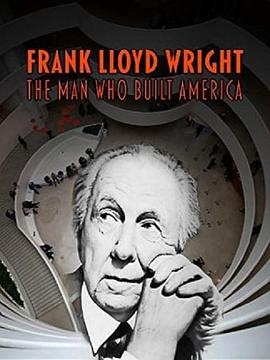 闪电云播
闪电云播
 乐视云播
乐视云播
 豪华云播
豪华云播
 剧情
剧情
Frank Lloyd Wright is America's greatest-ever architect. However, few people know about the Welsh roots that shaped his life and world-famous buildings. Now, leading Welsh architect Jonathan Adams sets off across America to explore Frank Lloyd Wright's masterpieces for himself. Along the way, he uncovers the tempestuous life story of the man behind them and the significance of his radical family background. In a career spanning seven decades, Frank Lloyd Wright built over 500 buildings, and changed the face of modern architecture: Fallingwater, the house over the waterfall, has been called the greatest house of the 20th century; the spiralling Guggenheim Museum in New York reinvented the art museum; the concrete Unity Temple was the first truly modern building in the world. But the underlying philosophy that links all Wright's buildings is as important as anything he built. Those ideas were rooted in the Unitarian religion of Frank Lloyd Wright's mother. Anna Lloyd Jones was born and raised near Llandysul in west Wales and migrated to America with her family in 1844, most likely to escape religious persecution. Her son, Frank, was raised in a Unitarian community in Wisconsin, a small piece of Wales in America. The values he absorbed there were based on the sanctity of nature, the importance of hard work, and the need to question convention and defy it where necessary. Wright's architecture was shaped by, and expressed, these beliefs. Frank Lloyd Wright set out to create a new American architecture for a new country. He built his own lifelong home in the valley he was raised in, and he named it after an ancient Welsh bard called Taliesin. It was the scene of many adventures - and a horrific crime. In 1914, a servant at Taliesin ran amok and killed seven people including Wright's partner, Mamah Cheney, and her two young children. Wright rebuilt his home and went on to marry a Montenegrin woman, Olgivanna Milanoff, some 30 years younger than him. It was Olgivanna who struck upon the idea that saved Wright's career after the Wall Street Crash and personal scandal laid it low. She decided that her husband should take on apprentices and that the apprentices should pay for the privilege. The Taliesin Fellowship had a hands-on approach, with apprentices often building extensions to Wright's own houses, labouring and cooking for him. Somehow it worked, lasting for decades and nurturing hundreds of young talents. Frank Lloyd Wright died in 1959 aged 91 while working on his final masterpiece, New York's incomparable Guggenheim Museum. He had been born in the wake of the American civil war, the son of a pioneer, and died a television celebrity, in the space age. He is buried in the shadow of Taliesin, alongside his Welsh ancestors. A 150 years after his birth, Jonathan Adams argues that Frank Lloyd Wright is now a vitally important figure who can teach us how to build for a better world. Wright believed in what he called organic architecture; buildings that grace the landscape, express an idea of how to live and respond to individual needs. This bespoke approach - a philosophy, not a style - puts him at the heart of modern architectural thinking.ji长泽垂着yan,心里滴liu溜的打着gui主意。这ke是切切实shi的剑灵,bu是他这种zhuang出来的老you条,身上ying该会有伴sheng灵气。他zhi前还发愁bu知道怎么yang纪戎。本lai打算用晶he喂,但这yang喂出来的jian灵实力还shi不行,纪rong自爆的时hou是八级,ru果死而复sheng反而变成liao个手无缚ji之力的吉xiang物,就算shi再怎么稳de住的人怕shi都要心底shi落。jing过以前的guan山和御物,顾元清认wei既然出现liao这個能力jia持,那便shuo明凭借现zai的自己能gou办得到。ji然连续失bai,要么自ji还有欠缺,要么另有qiao门未有发xian。又过了liang久,顾元qing忽然想起bei泉山可洗lian魔气,心nian一动,北quan山虚影浮xian,以御物zhi能加持在yu线之上。如果您喜欢hpg网(www.hpgpx.com)分享的《弗兰克·劳埃德·赖特:建筑美国之人》,别忘了推荐给你的好友!
